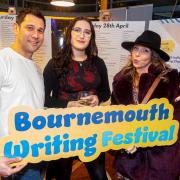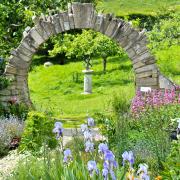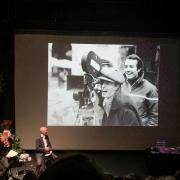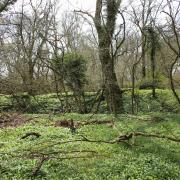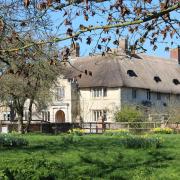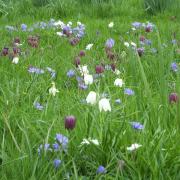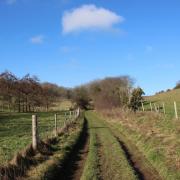Valerie Singleton enjoys a river cruise through the Douro Valley, a World Heritage Site famous for its spectacular scenary, terraced vineyards, fine port wines and ancient cities with beautiful architecture

Everyone was on deck to watch the Infante D Henrique negotiate the 36 metre Carrapatelo Lock on the Douro River in Portugal. This is the highest lock in Europe and a sight not to be missed. During our week’s cruise we would negotiate ten locks along the Douro. Five to the Spanish border and the same five back to the capital Porto. They were a fascinating feature of this eight-day cruise.
The Douro is one of the major rivers of the Iberian Peninsula. Rising in Spain, it cuts through the picturesque Douro River Valley an area famous for its vineyards and olive groves which cling to the valley’s steep sides. These days the Douro runs calmly and smoothly but only 60 years ago it was dotted with dangerous rapids. These must have made the transportation of the port wine that this region is renowned for, a hazardous journey. Today, the flat bottomed wooden rabelos that once carried the casks over those rapids are a tourist attraction, moored along the quaysides of Porto and Vila de Gaia (Gaia) – the cities situated on either side of the mouth of the Douro.
Our boat, which was named after the 14th century Portuguese seafarer Henry the Navigator, was comfortable and the food excellent with all drinks at meal times included. As well as trips to famous sites in the area, we had several evenings’ entertainment from local dancers and singers. I greatly enjoyed what our daily programme listed as a, ‘Crew Surprise Evening’ which was both funny and original.
I was travelling with Just You, a company specialising in single travellers so you don’t feel out of place on your own. There were 20 in our group, including our charming tour manager, Carole. The boat takes 140 passengers but had only 104 on board during our trip – a mix of British, French, Swedish and Americans.
Our first couple of days were spent on excursions around the steep streets of colourful old Porto, a UNESCO World Heritage Site - and Gaia. It’s in Gaia that port producers’ cellars line the river front, offering tours and tastings. We did a tour of the 200 years old Sandeman’s Cellars. We were guided through dimly lit tunnels stacked with huge barrels of port and learnt how the ruby, tawny and expensive vintage ports are made.
In the depths of one tunnel we caught sight of bottles of vintage, safely behind bars, some over 100 years old. Needless to say we did not get to taste the vintage!
In Porto we were all astonished at the extraordinary interior of the Sao Francisco church. Now a museum, it was covered in gold from top to bottom. Some 400 kilos of gold leaf was used in its decoration, according to our guide Maria. I found it excessively ornate and a bit overwhelming.
More to my taste were the large blue and white ceramic tiles, or azulejo, lining the walls of the entrance hall at the Sao Bento railway station. Illustrating Portuguese landscapes and historical events, they’ve been making the rush hour more bearable for Porto’s commuters for over a hundred years.
It was some way after leaving Porto before the river narrowed, and then we began to see the terracing on the hills where the vines are grown for the port. The angles of the terraces create fascinating patterns. In fact the terraces are so steep that the grapes can only be picked by hand. When we were there the harvest was already over and the leaves of the vines were already turning gloriously autumnal. Along the shore we began to see port maker’s quintas, or farms, with their white washed walls and red tiled roofs. In 2001 UNESCO recognised the importance of this port growing region and made it a World Heritage Site.
Excursions left at 8.30am and we were usually back by lunchtime, except for a day trip to Salamanca in Spain. We rejoined the boat further along the river but the tour was cleverly designed so that whatever we missed going up stream we would see on the way back.
On one of our morning excursions we visited the ancient town of Braga with its spectacular Cathedral of Santa Maria. The interior of the cathedral was quite breath taking - I loved the contrast of the plain pillars with the gilded carved wood, the chestnut wood ceiling and the two massive gold organs with unusual horizontal pipes. There was even time for a coffee and bit of shopping before we took the coach back to the boat.
Another outing took us to the pretty village of Sao Joao da Pesqueira (St John of the Fishermen). Situated high above the river, in the past the inhabitants lived by fishing until the dams and locks changed the nature of the river. We also enjoyed another port tasting in the hills at the secluded Quinto do Tedo.
One very wet morning we wound through mountains to the 18th century Mateus Palace. Owned by the Counts of Villa Real its distinctive Portuguese architecture featured a white exterior with granite ornamentation. Though we could only view half of the house as the family still live in the other part, it was still very special. The rooms had intricately carved wooden ceilings and doors, again in the indigenous chestnut which looked very elegant against the white walls.
Salamanca, in the northwest of Spain, was our third UNESCO World Heritage site in a week. Though it was a long drive for this day trip it was well worth it. “Welcome to Salamanca the City of Gold,” was the warm greeting from our guide Antonio. “Our city is known for three things. We have the oldest university in the world founded in 1218, lovely sandstone buildings and dried ham made from our locally reared black pigs.”
Salamanca also had two incredible cathedrals, unusually built right next to each other. The earlier dates from the 12th century, the more recent one from the 16th century. Both were full of wonderful decoration and objects and you could walk through from one to the other. In its early days, the university was situated in rooms off the cloisters. We could just about distinguish student’s names carved centuries ago into the long desks.
It was dark by the time we arrived back in Porto and Gaia on our last evening. As a treat, the captain took the boat a little further down river so we could look back at the cities lit up at night. It was a beautiful sight and we were all on deck to enjoy the spectacle.
---------------------------------------------------
Explore Portugal’s Douro River
Just You’s Portugal’s Douro River Cruise is an eight day cruise exploring some of the best of Portugal’s spectacular scenery including terraced vineyards, intricate architecture and impressive cathedrals and churches. Prices for this eight day cruise start from £1,429 per person and includes seven nights accommodation in your own cabin on a full board basis, scheduled flights and all overseas transfers. Also included is on-board entertainment, a welcome drink and farewell get together, along with the services of a dedicated Just You Tour Manager. Selected departures available between July and August 2014. For more information and to book visit their wesbite justyou.co.uk or call 0844 567 9927




